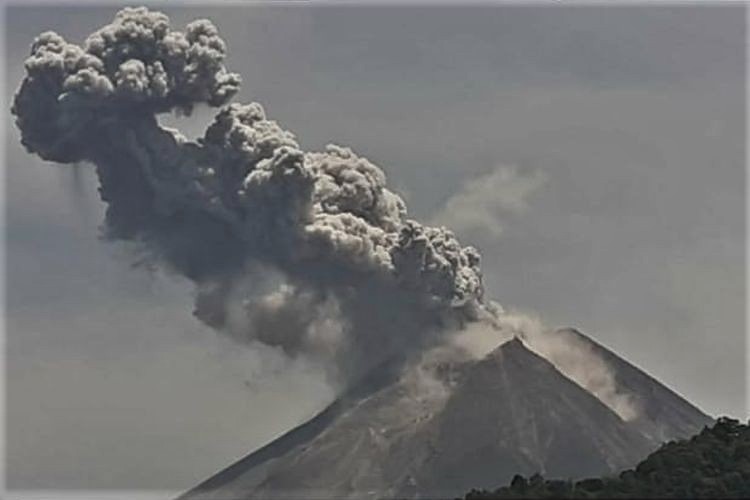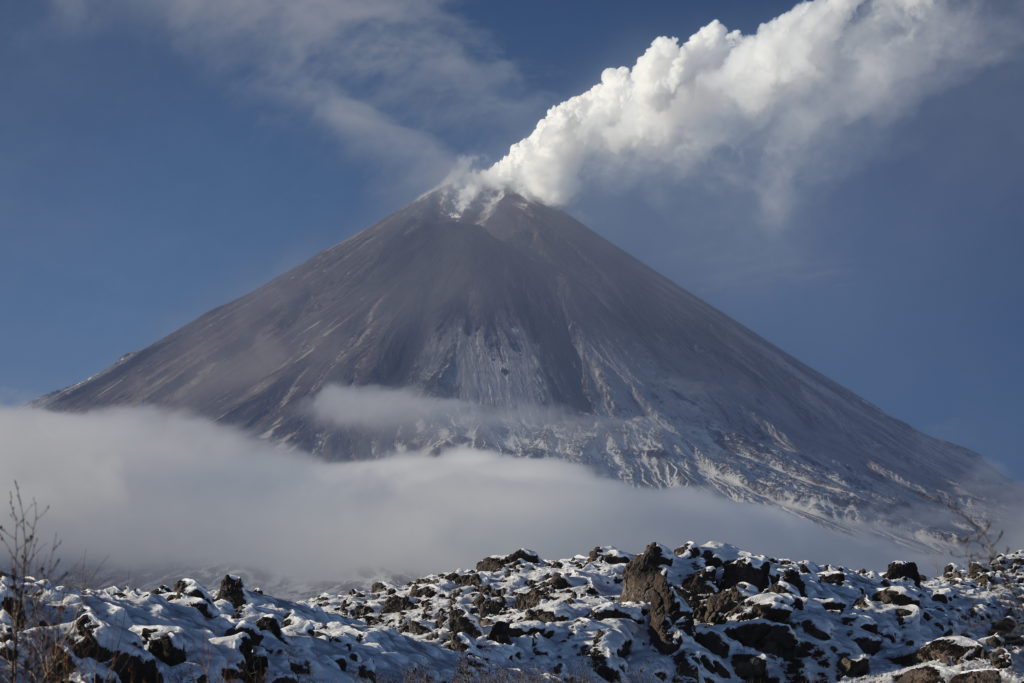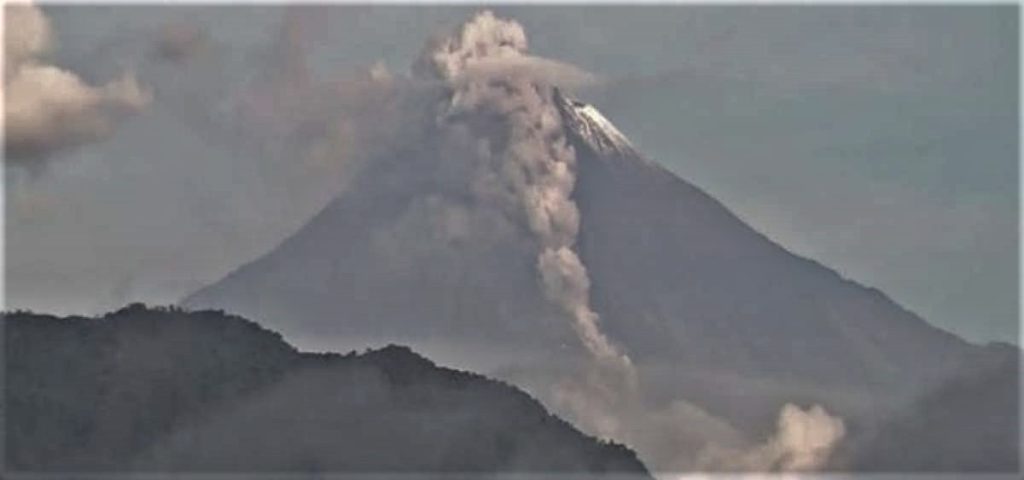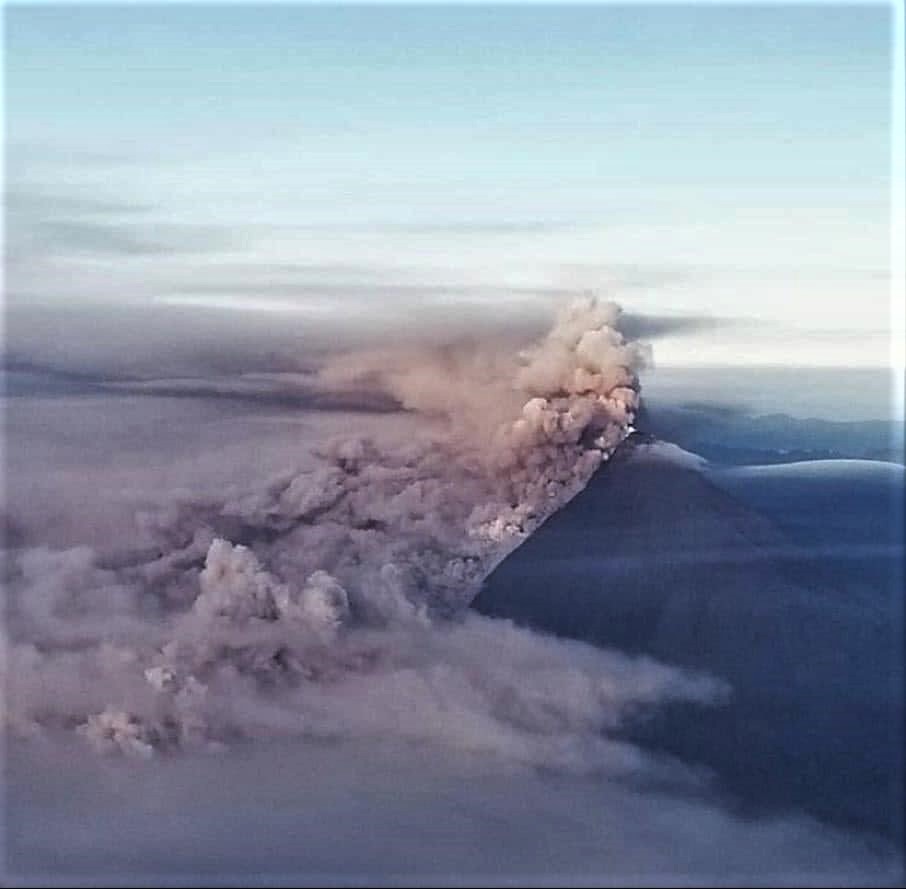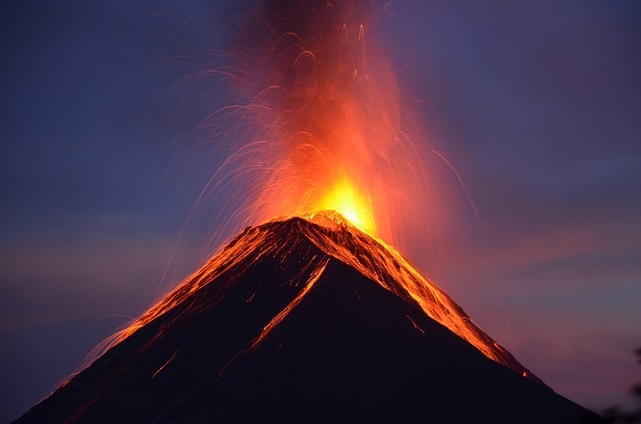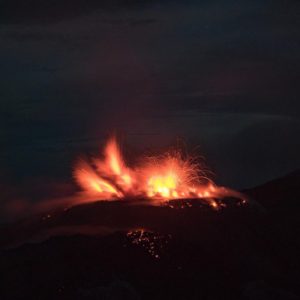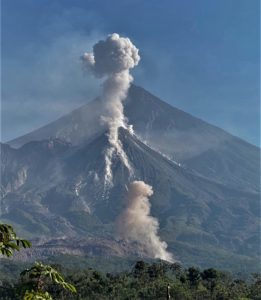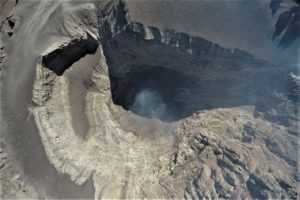January 06 , 2020 .
Indonesia , Merapi :
Mount Merapi in Central Java spewed hot ash on Saturday night, causing mild ash rain over Boyolali regency.
The eruption was recorded to have a maximum amplitude of 55 millimeters and a duration of 105 seconds.
Boyolali Disaster Mitigation Agency (BPBD) head Bambang Sinungharjo said the ash had fallen around Cepogo district, but preparations had been made in advance.
He said the BPBD was coordinating with the districts of Selo, Cepogo and Tamansari in anticipation of further ash rain. “The situation is under control,” he said on Sunday, as quoted by kompas.com .
“We have also distributed face masks to the public,” Bambang said.
The Geological Disaster Technology Research and Development Center (BPPTKG) has set Merapi’s alert level to waspada (caution), the second-highest level in the country’s four-tiered alert system.
Source : The Jakartapost.
Kamchatka , Klyuchevskoy
VOLCANO OBSERVATORY NOTICE FOR AVIATION (VONA).
Issued: January 06 , 2020.
Volcano: Klyuchevskoy (CAVW #300260)
Current aviation colour code: ORANGE
Previous aviation colour code: orange
Source: KVERT
Notice Number: 2020-05
Volcano Location: N 56 deg 3 min E 160 deg 38 min
Area: Kamchatka, Russia
Summit Elevation: 15580 ft (4750 m)
Volcanic Activity Summary:
A moderate activity of the volcano continues. Weak ash plume extended about 55 km to the east from the volcano.
A moderate activity of the volcano continues. Ash explosions up to 16,400-23,000 ft (5-7 km) a.s.l. could occur at any time. Ongoing activity could affect low-flying aircraft.
Volcanic cloud height:
16400-18040 ft (5000-5500 m) AMSL Time and method of ash plume/cloud height determination: 20200106/0046Z – MODIS TERRA (31m32)
Other volcanic cloud information:
Distance of ash plume/cloud of the volcano: 34 mi (55 km)
Direction of drift of ash plume/cloud of the volcano: E / azimuth 82 deg
Time and method of ash plume/cloud determination: 20200106/0046Z – MODIS TERRA (31m32)
Source : Kvert.
Photo : Yu Demyanchuck.
Ecuador , Sangay :
DAILY REPORT ON THE STATE OF VOLCÁN SANGAY N ° 2020-5,
SUNDAY 05 JANUARY 2020
EPN Geophysical Institute
Surface activity level : high, Surface trend: No change
Internal activity level : high, Internal trend: No change.
Seismicity:
From: January 04, 2020 11:00 a.m. to: January 05, 2020 11:00 a.m.
Long period type (LP): 35
Explosions (EXP): 5
Transmission tremor (TE): 13
Gas flow: (SO2 / ton / day): 1017.0 +/- 1.0 Number of validated measurements: 1
Rain / lahars: No rain was recorded.
In case of rain in the area, the accumulated volcanic material can be remobilized, generating mudslides and debris (secondary lahars) which can reach the Volcan and Upano rivers.
Emissions / ash column: in the evening yesterday, we could observe gas emissions with low ash load with heights up to 700 meters above the level of the crater, with directions West.
Other monitoring parameters: The rolling of incandescent materials along the southeast flank was also observed. Alert level: yellow.
Source : IGEPN.
Photos : Ecu911Macas, Leoquina San Fernando.
Guatemala , Fuego :
Type of activity: Vulcanian
Morphology: composite stratovolcano
Location: 14 ° 28’54˝ Latitude N; 90 ° 52’54˝ W longitude
Height: 3763msnm
Atmospheric conditions: Clear
Wind: North 9 km / h
Precipitation: 0.0 mm.
Activity:
Presence of a weak white degassing at an approximate height of 4400 meters above sea level (14436 feet) dispersed in a west and southwest direction. There is a frequency of 15 to 20 ash emissions per hour, with low to moderate characteristics, at an approximate height of 4400 to 4700 m above sea level (14764-15419 feet) traveling 20 km west and south -West. There are low to moderate rumblings, with low to moderate shock waves that cause vibrations in the roofs and windows of houses near the volcano (sensitive 25 km from the crater), which resonate like a train locomotive with intervals 7 to 11 minutes. In the evening and early in the morning, an incandescence was observed in the crater at an approximate height of 500 meters above the crater, causing weak and moderate avalanches on the outline of the crater, some strong, reaching the vegetation towards the canyons : Taniluyá, Ceniza and Las Lajas. The ashes fall on Morelia, Santa Sofía, Sangre de Cristo, San Pedro Yepocapa, Panimaché I and II, among others.
Source : Insivumeh.
Photo : Nath Duverlie , 05/05/2019.
Mexico , Popocatepetl :
January 05, 11:00 a.m. (January 05, 5:00 p.m. GMT)
According to the monitoring systems of the Popocatépetl volcano, 154 exhalations composed of water vapor, volcanic gases and low ash content have been identified. In addition, 60 minutes of tremors were recorded; no glow was observed at night.
Currently, there is visibility towards the volcano and there have been low ash exhalations which are dispersed preferentially in the Northeast. This morning at the time of this report, a continuous emission of water vapor and volcanic gases was observed.
CENAPRED urges NOT to APPROACH the volcano and especially the crater, because of the danger of falling ballistic fragments, and in case of heavy rain, stay far from the bottom of the ravines because of the danger of mudslides and debris.
The Popocatépetl volcanic signaling light is in YELLOW PHASE 2.
Source : Cenapred .
Photo : GL , Volcan Popocatepetl

